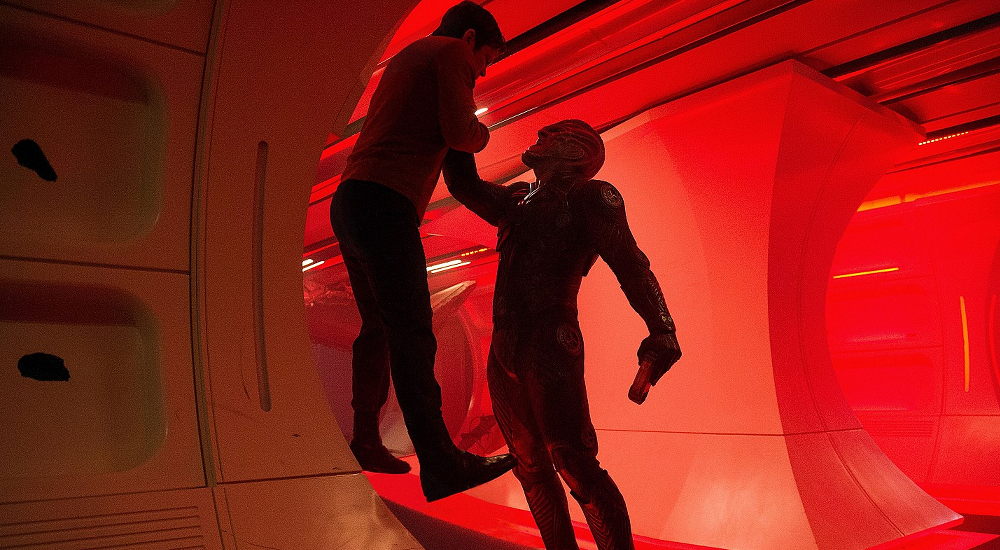“There is strength in unity.”
Opening on a failed peace negotiation that pits Captain James Tiberius Kirk against a civilization of pint-sized critters, Star Trek Beyond immediately sets the tone for the forthcoming Enterprise voyage.
Though, as he nears his upcoming birthday, the ship’s leader appears in a bit of a funk, things are continuing to look up for the crew on board the famed ship as they return to Yorktown to prepare for the next phase of their five year mission. Character relations are introduced, offering up as many questions as they do answers, and the overly hyped Sulu controversy passes without much of a thought.
Director Justin Lin (who takes over behind the camera from producer J.J. Abrams), quickly infuses his style into the franchise, utilizing his steady hand and ability to integrate natural and stylistic humor and wit into a story that is, at its core, an action heavy drama. He works hard to give fans the blockbuster moments, leaning heavy on the space battle sequences, but has a knack for dialing in on character interactions, forging relationships and exploiting the human emotion to dig deeper into the heart of the story.
The film’s title comes into play during several moments as it constantly teases a shakeup to the crew aboard the Enterprise. But little materializes in the form of personnel, making the “Beyond” a large metaphor to their location within deep space, not a question as to what lies beyond the ship and its decades of voyages.
Chris Pine, who has served as the Enterprise’s Captain Kirk since the franchise was rebooted in 2009, leads an all-star cast (or crew) as he takes his ship deep into the depths of the nebula. But things turn a bit dicey, sending the film into an elaborate (and downright impressive) visual ecstasy that pits Kirk against the film’s central villain Krall (played by a heavily make-uped Idris Elba).
As the Enterprise falls under the attack of the unknown alien race we find ourselves treated to a truly impressive display of special effects. Though I was a bit disappointed that Lin didn’t adopt Alfonso Cuarón’s Gravity stance that allowed audiences to experience an action sequence in complete silence, the entire package is nothing short of a visual masterpiece that, oddly enough, bears quite the resemblance to a high ranking level of galaga. And when it is all said and done, we’ve been given a fifteen minute adrenaline rush that doesn’t begin to dwindle until long after Bones rips a piece of metal out of Spock’s side.
As we continue through the formulaic steps that Hollywood all but requires of any summer blockbuster, it is hard to not realize the lack of creativity that exists within the franchise. The final moments, much like the abysmal Star Trek Into Darkness, forgoes simple logic in an effort to conjure up a sense of excitement and suspense. It is a disservice to the previous two hours as you find yourself grasping at straws, all too sure that no one over the age of six even questioned the ultimate outcome, and frustrated that Lin didn’t take the opportunity to offer up a breathe of fresh air for the audience.
But that isn’t what Lin was supposed to do. He works hard to present a story that appeals equally to the newcomers and the series obsessors. And though his efforts are obstructed slightly by corporate expectations, he succeeds in showing that sometimes the wheel doesn’t need to be recreated.

